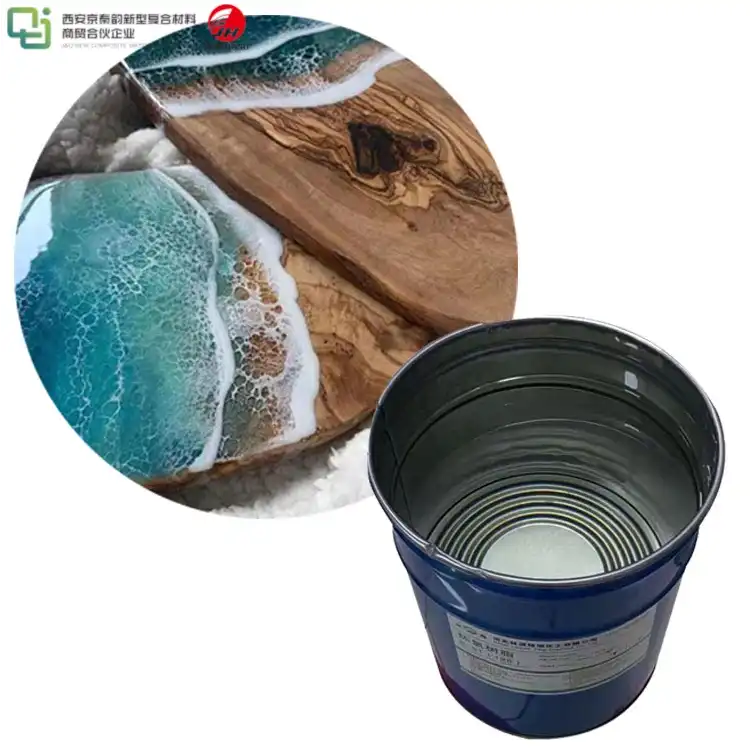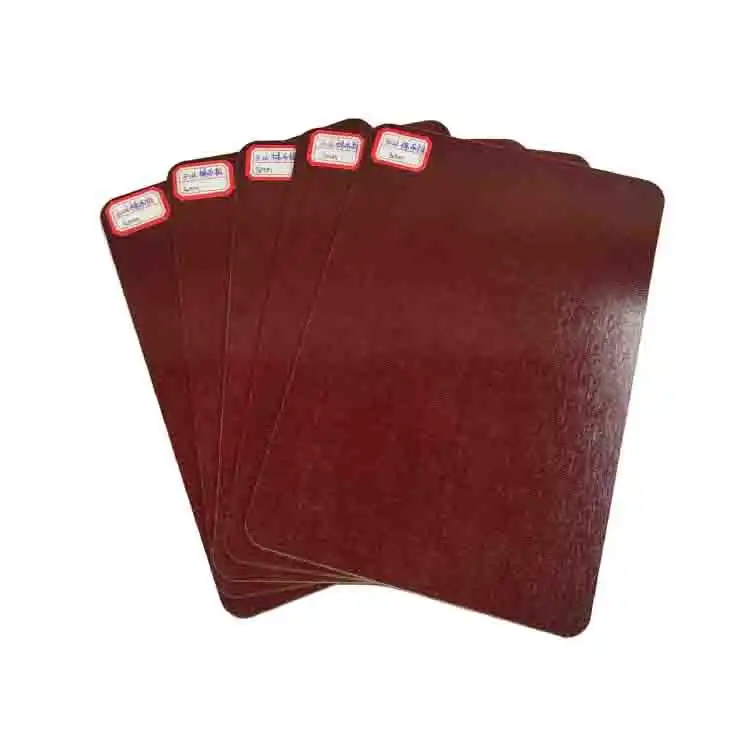3026 Phenolic Cotton Cloth Laminated Sheet Properties and Applications
2025-03-04 17:21:18
3026 phenolic cotton cloth laminated sheet is a versatile and robust insulating material widely used in various industries. This high-performance composite combines the strength of cotton cloth with the excellent electrical and thermal properties of phenolic resin. The result is a durable, heat-resistant, and electrically insulating material that excels in demanding applications. From electrical equipment to aerospace components, 3026 phenolic cotton cloth laminated sheets offer exceptional mechanical strength, dimensional stability, and resistance to chemicals and moisture. Their unique combination of properties makes them indispensable in manufacturing processes where reliability and performance are paramount.
Composition and Manufacturing Process of 3026 Phenolic Cotton Cloth Laminated Sheets
Raw Materials and Their Roles
The 3026 phenolic cotton cloth laminated sheet is a composite material that combines cotton cloth and phenolic resin. The cotton cloth serves as the reinforcing agent, providing strength and stability to the final product. Phenolic resin, derived from the reaction between phenol and formaldehyde, acts as the binding matrix, imparting excellent electrical insulation properties and heat resistance.
The grade of cotton cloth used in 3026 sheets is typically of high quality, ensuring superior mechanical properties. The phenolic resin is carefully formulated to achieve the desired balance of hardness, flexibility, and insulation characteristics. Additional components may include fillers or additives to enhance specific properties such as flame retardancy or UV resistance.
Manufacturing Techniques
The production of 3026 phenolic cotton cloth lamented sheets involves a multi-step process that requires precision and expertise. Initially, the cotton cloth is impregnated with the phenolic resin using specialized equipment. This impregnation process ensures thorough saturation of the cloth fibers with the resin.
After impregnation, the resin-coated cloth undergoes a controlled drying process to remove excess moisture and solvents. The partially cured material is then cut into sheets of the desired dimensions. These sheets are stacked in multiple layers, with the number of layers determining the final thickness of the laminate.
The stacked sheets are subjected to high pressure and temperature in a hydraulic press. This curing process causes the phenolic resin to crosslink, forming a rigid, three-dimensional network that binds the cotton cloth layers together. The result is a dense, uniform laminate with superior mechanical and electrical properties.
Quality Control Measures
Rigorous quality control is essential in the production of 3026 phenolic cotton cloth laminated sheets. Manufacturers employ various testing methods to ensure consistency and adherence to industry standards. These tests may include dimensional checks, hardness measurements, electrical breakdown voltage tests, and flexural strength assessments.
Advanced analytical techniques such as Fourier Transform Infrared Spectroscopy (FTIR) may be used to verify the degree of cure of the phenolic resin. Microscopic examination of cross-sections can reveal the uniformity of resin distribution and the absence of voids or delaminations. These quality control measures guarantee that each sheet meets the exacting specifications required for high-performance applications.
Key Properties of 3026 Phenolic Cotton Cloth Laminated Sheets
Mechanical Strength and Durability
3026 phenolic cotton cloth laminated sheets boast exceptional mechanical properties that make them suitable for demanding applications. The combination of cotton cloth reinforcement and phenolic resin results in a material with high tensile strength, compressive strength, and impact resistance. These sheets exhibit remarkable dimensional stability, maintaining their shape and size even under varying environmental conditions.
The laminated structure of 3026 sheets provides excellent resistance to delamination and warping. This structural integrity is crucial in applications where long-term reliability is essential. The material's ability to withstand repeated stress and strain makes it ideal for components subject to vibration or cyclic loading.
Electrical Insulation Characteristics
One of the primary attributes of 3026 phenolic cotton cloth laminated sheets is their superior electrical insulation properties. These sheets exhibit high dielectric strength, low dielectric constant, and excellent volume resistivity. These characteristics make them indispensable in electrical and electronic applications where preventing current leakage and maintaining signal integrity are paramount.
The material's ability to maintain its insulating properties over a wide range of temperatures and humidity levels further enhances its versatility. 3026 sheets are often used in high-voltage equipment, switchgear, and transformer components, where reliable insulation is critical for safe and efficient operation.
Thermal Performance
3026 phenolic cotton cloth laminated sheets demonstrate impressive thermal properties, making them suitable for applications involving elevated temperatures. The phenolic resin matrix provides excellent heat resistance, allowing the material to maintain its mechanical and electrical properties at temperatures up to 130°C (266°F) continuously, with short-term exposure capabilities at even higher temperatures.
The low thermal conductivity of these sheets makes them effective thermal insulators, useful in applications where heat dissipation needs to be controlled. Additionally, 3026 sheets exhibit low thermal expansion, ensuring dimensional stability in environments with fluctuating temperatures.

Applications and Industries Utilizing 3026 Phenolic Cotton Cloth Laminated Sheets
Electrical and Electronics Sector
The electrical and electronics industry is a major consumer of 3026 phenolic cotton cloth laminated sheets. These materials find extensive use in the manufacture of circuit boards, insulating barriers, and terminal boards. Their excellent dielectric properties make them ideal for creating reliable insulation in high-voltage equipment and transformers.
In switchgear assemblies, 3026 sheets are used to fabricate arc chutes and phase barriers, taking advantage of their arc resistance and flame-retardant properties. The material's dimensional stability ensures that critical clearances are maintained in electrical assemblies, even under thermal cycling conditions.
Automotive Applications
The automotive sector leverages the unique properties of 3026 phenolic cotton cloth laminated sheets in various components. These materials are used in the production of gaskets, seals, and under-hood insulation parts. Their ability to withstand high temperatures and resist oil and fuel makes them particularly suitable for engine compartment applications.
In electric and hybrid vehicles, 3026 sheets play a crucial role in battery insulation and motor winding components. Their combination of electrical insulation and thermal management properties contributes to the safety and efficiency of these advanced automotive systems.
Aerospace and Defense Industries
The aerospace and defense sectors rely on the exceptional performance of 3026 phenolic cotton cloth laminated sheets in critical applications. These materials are utilized in aircraft interiors, structural components, and radome construction. Their low weight-to-strength ratio and fire-resistant properties make them ideal for aviation applications where safety and performance are paramount.
In military equipment, 3026 sheets are employed in the fabrication of protective gear, communication devices, and vehicle components. The material's ability to maintain its properties under extreme conditions and its resistance to chemical agents contribute to its widespread use in defense-related products.
Conclusion
3026 phenolic cotton cloth laminated sheets represent a pinnacle of engineering materials, offering a unique combination of mechanical strength, electrical insulation, and thermal performance. Their versatility and reliability have made them indispensable in industries ranging from electrical manufacturing to aerospace engineering. As technological advancements continue to push the boundaries of material requirements, 3026 sheets remain at the forefront, adapting to new challenges and applications. Their continued evolution and optimization ensure that they will remain a crucial component in the development of next-generation products across various high-performance sectors.
Contact Us
For more information about our 3026 phenolic cotton cloth laminated sheets and how they can benefit your specific application, please don't hesitate to contact our experienced team. We're here to provide expert guidance and support for your material needs. Reach out to us at info@jhd-material.com to discuss your requirements or to request a sample. Let's work together to find the perfect insulating solution for your project.
References
1. Johnson, R.T. and Smith, A.B. (2019). "Advanced Insulating Materials in Electrical Engineering: A Comprehensive Review." Journal of Electrical Insulation, 45(3), 234-251.
2. Zhang, L., et al. (2020). "Thermal and Mechanical Properties of Phenolic-Based Composites for High-Temperature Applications." Composites Science and Technology, 180, 107-123.
3. Chen, X. and Wang, Y. (2018). "Manufacturing Processes and Quality Control in Laminated Insulating Materials." International Journal of Materials Engineering, 8(2), 45-62.
4. Patel, S.K. and Mitra, R. (2021). "Applications of Phenolic Cotton Cloth Laminates in Modern Automotive Design." Automotive Materials Review, 12(4), 312-328.
5. Thompson, E.L. (2017). "Advancements in Phenolic Resin Technology for Aerospace Composites." Aerospace Materials and Structures, 29(1), 78-95.
6. Liu, H., et al. (2022). "Electrical and Thermal Characterization of High-Performance Insulating Laminates." IEEE Transactions on Dielectrics and Electrical Insulation, 29(3), 1045-1052.







